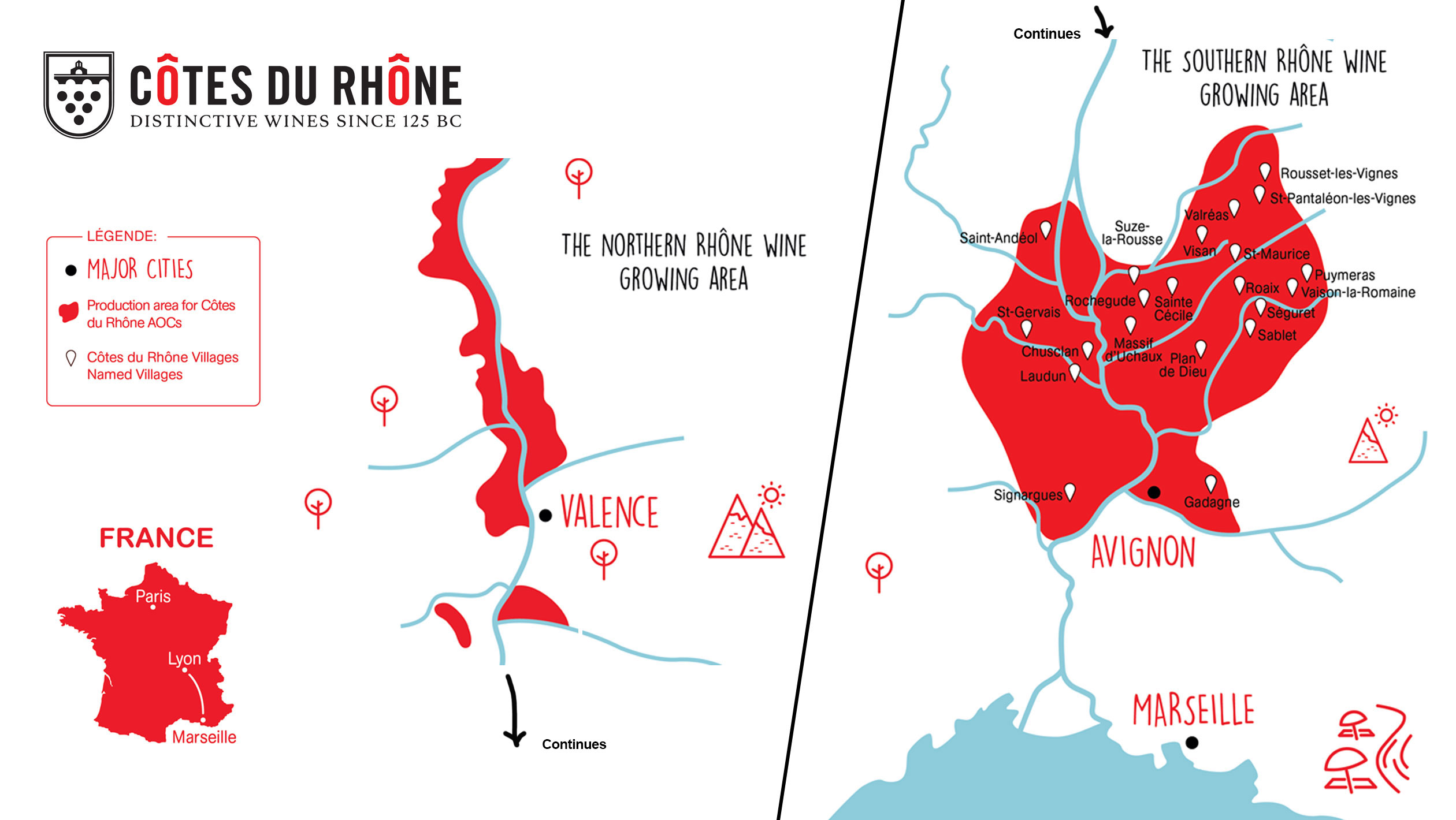

The Côtes du Rhône Villages title covers around 20 such regions (the list changes over time) and wines from a single zone can append their region to the label, producing the likes of Côtes du Rhone Villages Saint-Maurice-sur-Eygues. These regions are spread either side of the river around the town of Orange. Immediately south of Grignan-les-Adhémar and the Côtes du Vivarais lie the broad Côtes du Rhône Villages titles, restricted to specific villages and comunes whose terroir produces wine of a slightly higher quality. On the other, western, side of the river is Côtes du Vivarais, in the Ardèche. The northernmost appellation here is Grignan-les-Adhémar, which was formerly known as the Coteaux du Tricastin but renamed in 2011 after the establishment of the controversial Tricastin nuclear power plant. The Southern Rhôneīroadly speaking, the southern section of the (viticultural) Rhône valley begins at Montélimar and runs south. While these wines are still subject to the rules and regulations of the appellation laws, they rarely match up to the quality required from more location-specific titles such as Saint-Joseph or Gigondas. This title covers 171 communes over the 200km (125 miles) between Vienne in the north and Avignon in the south – the towns that mark the beginning and end of the main valley. An important, unifying constant between the two areas is the regional Côtes du Rhône appellation, which can be claimed by red, rosé and white wines from all over the valley. The north-south division is not complete, however. The northern Rhône is also home to the IGP titles of Collines Rhodaniennes and also falls under the very broad catchment of the Comtés Rhodaniennes title (which also encompasses Beaujolais and Savoie). While the north is often – in perception, at least – restricted to small appellation titles associated with small areas, it is worth bearing in mind Saint-Joseph appellation runs for 150km (90 miles) on the west bank of the Rhône between Chavanay (in southern Condrieu) in the north and Giulherand-Granges, opposite Valance, in the south. While best-known as the Syrah heartland of the Côte-Rôtie and Hermitage, along with the associated appellations of Crozes-Hermitage, Cornas, Saint-Péray and Saint-Joseph, the northern Rhône also boasts Viognier's home soils of Condrieu and the single-estate appellation of Château-Grillet, just south of the town of Ampuis – the focal point of the Côte-Rôtie. The south is not entirely lacking in prestige, however, as it is here that the Châteauneuf-du-Pape appellation is located. The remaining 95 percent is made in the south under often less-prestigious and less region-specific names.


The north boasts old and highly respected names, such as Hermitage and Côte Rôtie, but it accounts for only five percent of the valley's total wine production. Prestige is also a key differentiator between the northern and southern areas of the Rhone. While the granite-blessed slopes of the north are paired with a continental climate, the rocky, sandy soils of the flatter south enjoy the warmer winters of a Mediterranean climate. The most notable of these are the red varieties Grenache and Mourvèdre, which are combined with Syrah to produce the 'GSM' blend so characteristic of the southern Rhone. The smaller, more quality-driven northern section focuses almost entirely on Syrah for red wines and Viognier, Marsanne and Roussanne for whites, while the larger and more prolific south employs a much longer list of varieties. This division is reflected not only in geography and preferred grape varieties, but also in the quality and quantity of wines produced. Rather neatly, they are separated by a gap of 25 miles (40 km) between the towns of Valance and Montelimar, in which almost no vines are grown. The region's wine-producing areas cover such a distance that there is a widely accepted division between its northern and southern parts. The length of the valley means that Rhône wines are the product of a wide variety of soil types and mesoclimates. It follows the north–south course of the Rhône river for almost 240km (150 miles) from Lyon to the Rhône Delta (the "Bouches-du-Rhône") on the Mediterranean coast. The Rhône Valley is a key wine-producing region in the southeast of France. The famous, oft-photographed Hermitage chapel, overlooking the Rhône river at Tain-l'Hermitage - the source of some of the greatest Syrah-based wines in the world | © Marcello Brunetti /


 0 kommentar(er)
0 kommentar(er)
